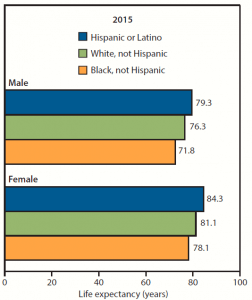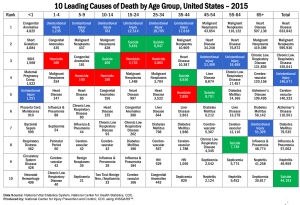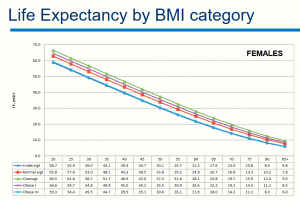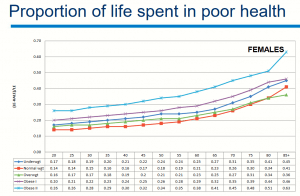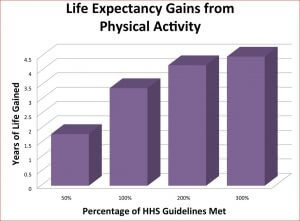How Long Do We Live?
Can you imagine a world where humans lived to be 969 years old? The Masoretic text reports that Methushelah lived to be that old and was still “begetting” at age 187. It is doubtful that Methushelah had any idea about his lifespan or his statistical life expectancy when he was only 500 years old, but you should be because there are things you can do about it. Biblical apologists may or may not help you decide if the biblical account is true.
Lifespan of Mammals
We are mammals and our fellow mammals that live on land live between one year for small voles to one hundred years for us humans. Some sea mammals live several hundred years but we are the champions for mammals living on land. Land mammals that eat well outlive those that do not eat well. We have no reason to believe that we are different. Poorly fed voles live 6 months; well fed small voles can live a year. They reproduce very quickly but their lives are spent evading predators so their life expectancy is very short.
The predators all live longer lives. Raccoons eat voles and manage to live 2-3 years in the wild, but some have lived to age 20 in captivity. In the wild, a racoon has a life expectancy of 3 years but in captivity their longevity (lifespan) may reach 20 years. Presumably free healthcare correlates positively with longevity for racoons.
Lifespan vs. Life Expectancy
Lifespan and life expectancy are two different concepts that are sometimes used interchangeably. Life expectancy is the number of years people are expected to live from a point in their lives based on a statistical average. That is, life expectancy at birth is one data set, while expectancy at age 50 is another set of numbers. The statistical mean is published in tables such as the one to the left. Life expectancy has increased dramatically since the late 1700’s, while maximum lifespan has stayed about level for reliably recorded time.
People who had access to adequate food and safety historically have had relatively long lifespans. Catholic popes live well into their 80’s. British monarchs didn’t fare quite as well; most died in their 60’s and 70’s. American presidents cluster around age 65 at death. In England and Wales for the period 2007 to 2011, the most common age at death was 85.6 years for men and 88.3 years for women.
Lifespan is the maximum number of years that a person can potentially expect to live based on the greatest number of years anyone from the same data set has lived. The oldest well documented human lifespan is that of Jeanne Calment of France (1875–1997), who lived to the age of 122 years, 164 days.
What Can Be Done to Increase Life Expectancy?
For starters, the best thing you can do to increase your life expectancy is to not die at birth. After that, in the safety of your parents’ home, you are pretty secure. Then the death curve starts going north.
The following curve gives you an idea what happens after adolescence.
Imagine your life in relation to the curve. Between age 40 to age 60 the slope (rate) of the curve is pretty much a straight line with the number of people dying increasing by only 800 deaths per hundred thousand. From age 60 to 80, the slope of the curve is steeper but still almost a straight line accounting for approximately 2,100 additional deaths per 100,000 at age 80. People die at a much higher rate after age 60, not really too surprising.
As you see, the bell curve for the number of people dying at a particular age is wide to the left of the curve but drops precipitously after approximately age 85.
Those who are already at age 80 and those who know people in their 80’s are aware of the large number of people in that age group who have significant health issues. Many complain that they really don’t want to live too long if they are going to feel terrible all the time. So the question is not, “What Can Be Done to Increase Life Expectancy?” The real question is, “What can I do to increase my life expectancy and remain healthy and active?” Pay attention to “active.” It is more important than most people think.
Top Ten Causes of Death by Age Group
Infant mortality from all causes is too high in the United States compared to many other countries. The Washington Post calls it a National Embarrassment.
From age 1 to up to age 45, unintentional injuries are the leading cause of death.
From 45 to age 65, malignant neoplasms top the list. After age 65 heart disease takes over as the number one cause of death followed by cancer. The numbers dying from cancer and heart disease after age 65 are truly staggering.
After eliminating the accidents, injuries, and purposely killing yourself, is there any way to avoid cancer and heart disease? A lot of the other causes of death like septicemia (blood poisoning) are really just bad luck or stupidity so they could be classified along with accidents. Presumably they are easier to avoid than cancer and heart disease. (HERE is a good article about septicemia)
Wharton School Life Expectancy Calculator
The Wharton School at the University of Pennsylvania developed a Longevity Calculator (HERE – opens in a new tab)
You can access the Calculator Home Page HERE
The calculator is still functioning but does not appear to be well maintained. The research behind it is being used for commercial purposes associated with estate planning. We have not researched the assumptions behind the calculator nor do we know if the mortality tables they use are current. Nevertheless one of the authors of the tool, Dr. Lyle Ungar, makes several valuable observations that are incorporated into the tool.
- Genetics and Family History correlate positively with longevity.
- Being well educated correlates positively with a longer lifespan.
- Avoiding accidents and dangerous behavior correlates positively …
- Exercise has a very strong influence on maintaining good health and reducing mortality.
- Having friends and maintaining close positive relationships increases life expectancy.
- Professor Ungar, at the time he wrote the page, saw little correlation between diet and increased life expectancy.
What are correlation and causation and how are they different?
Two or more variables are considered to be related if the value of one changes when the value of the other the other changes, either up or down.
Correlation is a statistical measure (expressed as a number) that describes the size and direction of the relationship between two or more variables. A correlation between variables does not necessarily mean that the change in one variable is the cause of a change in the value of other variables. Correlation as a statistic can’t explain why or how the relationship between two variables, exists; only that it does exist.
Being hit by lightening correlates positively with death. Being outside on a golf course during a thunderstorm also correlates positively with dying, but not as high as for fishermen. Yet only 10 percent of people hit by lightening die while others suffer neurological complications. Of those who die, the most common proximate cause of death is cardiac arrest or complications of a cardiac arrest. So does being hit by lightening cause death?
Causation indicates that one event is the result of the occurrence of the other event. In practice it is more difficult to show causation that it may seem. A high fat diet does not cause heart disease but may correlate with heart disease. Not buying a lottery ticket is one direct cause of not winning, but there are obviously other reasons for not winning. Depending on the lottery, you may be 4 times more likely to be hit by lightening that winning a large national lottery. Life is a crap shoot, which carries its own statistical chances of winning.
Diet and Nutrition are Difficult to Correlate with Increased Life Expectancy in Developed Countries
It is easy to see how a lack of nutrition leading to starvation and disease causes death, illness, and low life expectancy. But what about too much food in developed countries? Does too much food contribute to illness and death?
The difficulty with placing too much emphasis on diet and nutrition as the path to lifelong health and longevity are data that show it doesn’t make a lot of difference. The famous Framingham Heart Study started in 1948 has contributed a lot to the understanding of the epidemiology of cardiovascular disease and its risk factors. Yet many of its early conclusions have been overturned. That’s the way science works.
Framingham demonstrated an association between hyperlipidemia and heart disease. Doctors put people on low fat diets and told them to eat margarine instead of butter. Nobody paid much attention in those days to the hydrogenated fat (trans fat) that went into margarine and vegetable shortening (Crisco). Manufacturers of margarine touted it as heart healthy. Now trans fats are associated with heart disease, stroke, and diabetes. The Food and Drug Administration has taken steps to eliminate most trans fat from our food chain.
Many studies are poorly designed and do not control for enough variations in human nutrition. People are not reliable in reporting their food intake in both quantities and type. What is a serving of green beans? How many grams of chard did you eat at that meal? How many grams of sugar?
Research into fats in the diet generally pointed to an increase in heart disease with high fat diets. But it has also been demonstrated that not all fats are created equal. Monounsaturated fats are considered good. Saturated fats are claimed to be bad, except short chain saturated fats, such as the currently popular coconut oil, may be good depending on the study. In most of the studies on dietary lipids (fats), none until recently has controlled for carbohydrates in the diet and all are relatively short in duration. It takes years to reach conclusions about dietary effects on health so short term studies yield little in the way of definitive answers.
Diet is like a seesaw. If you reduce one source of energy and nutrition, you have to replace it with another that has an entirely different energy and nutritional profile. Popular diets such ketogenic, paleo, Atkins, vegan, vegetarian, organic, low-carb, high carb-low fat, among a myriad of variations have shown no distinct advantage for health and longevity. This is probably due to the fact that in developed countries where malnutrition is not a problem, too much food becomes the problem leading to insulin resistance and obesity.
Calories in, Calories Out
Energy balance in humans follows the simple physical laws of thermodynamics. It is not unlike an automobile. You put energy in (fuel). The automobile has inefficiencies, friction, and losses going out as heat (mechanical losses). The amount of energy required to travel is the energy you put in, minus the mechanical/frictional losses.
Living things work the same way. The energy you put in, minus the energy your body needs at rest to keep warm, digest food, etc., equals the amount of energy you have available to run up the side of a mountain with a full backpack.
The longest living distinct (non-clonal) organism on the earth may be the bristlecone pine in the American West, with some individual trees estimated to be over 5,000 years old. The energy it uses is from photosynthesis and is used just to stay alive, not moving about or flying. It lives in such inhospitable places that it has few enemies and even forest fires just destroy some of the wood above ground while the roots remain intact.
When an organism ingests more energy than it needs just to stay alive, it will retain that energy in some form as increased mass. The bristlecone pine grows taller; human beings grow fatter.
While there is a wide latitude of how much fat that you can carry without significant health issues, overeating and gaining too much fat has negative consequences. Too much fat correlates positively with heart disease, cancer, type 2 diabetes, high blood pressure, sleep apnea, osteoarthritis, stroke, and even depression. All this does not mean that being overweight causes any of these conditions.
BMI as a Measure of Being Overweight
BMI (Body Mass Index) is defined as the weight in kilograms divided by the height squared, and is expressed in units of kg/m2. (BMI = kg/m2)
Doctors use it as a general guide to encourage people who are overweight or markedly underweight to undertake dietary interventions to correct a problem that is not substantiated by the data. Many criticize BMI as flawed but it still appears in clinics everywhere.
It does not account for muscle mass, bone density, or well documented age and racial differences. It rates tall people as being fatter than they are and short people as too thin.
The graph points out the fat person paradox. Why do overweight and minimally obese people have greater life expectancy at all age groups than even people deemed to be of normal weight? Underweight people and morbidly obese people have slightly lower life expectancy. The chart for males is similar but with a slightly shorter life expectancy.
BMI CALCULATOR – ENGLISH UNITS |
HERE is another calculator from The Centers for Disease Control and Prevention |
BMI in Relation to the Proportion of Life Spent in Poor Health
Another instructive graph from the Health Canada people shows how BMI relates to the proportion of life spent in poor health. This is a rather surprising statistic but it is consistent with the data from all the countries surveyed.
The gender gap is also evident here. Women report poorer health, but live longer than men.
It has been suggested that women’s longevity advantage is directly related to their health disadvantage: they have poorer health because they live longer, not in spite of living longer.
The conclusion to be drawn from this chart is that being overweight renders one slightly more susceptible to illness of all sorts. From a Statistics Canada Publication, (Appendix-Table A), the United States had a life expectancy for males of 75.9 years, of which 66.2 years were considered in good health. The percentage of life expectancy in poor health was 12.78% in keeping with the Canadian experience by age groups shown in the above chart.
“In the 1920s, a pattern began to emerge in the health and mortality of men and women… “Women get sicker, but men die quicker.” Although men’s mortality rate exceeds that of women at all ages, women tend to report worse health. Even excluding reproductive conditions, a sizeable gender difference remains in the prevalence of acute conditions and short-term disability. Older women exhibit greater rates of decline in physical functioning, are less likely to recover from disability, and more frequently report pain. Some studies find that women use health care services and prescription and non-prescription drugs more often than men do. These observations have prompted a great deal of research, construing the phenomenon as the “gender and health paradox,” the “paradox of ‘weak but strong women’ and ‘tough but weak men,’ ” or the “male-female health-survival paradox.” Health Reports, Vol. 25, no. 12, pp. 12-19, December 2014 • Statistics Canada, Catalogue
Does Physical Activity Increase Life Expectancy?
In a review of the literature carried out by German researchers, they reported a mean increase in life expectancy of 2.9 ± 1.3 years for men, and 3.9 ± 1.8 years for women for physically active people. In their study, the amount of physical activity in the active and inactive groups was not well enough defined for any statistical correlation between the amount of activity and the added years of life.
Nevertheless the German study is in line with a National Institute of Health Study in 2012 that documented an increased life expectancy of 3.4 years longer for people who reported they got the recommend level of physical activity. What is the recommended level of activity?
The U.S. Department of Health and Human Services recommends that adults ages 18 to 64 engage in regular aerobic physical activity for 2.5 hours at moderate intensity, or 1.25 hours at vigorous intensity each week. They define moderate activities are those such as walking during which a person could talk without having to stop to take a breath. Vigorous activities are those during which a person could say only a few words without stopping for breath.
In a small Australian study to see if exercise could restore the elasticity of hearts of sedentary people, they found that sedentary middle aged adults, 45-64 years of age, who exercised vigorously over a ten month period were able to repair their hearts. An older group, mean age of 70, was unable to significantly reduce the stiffness of the left ventricles of their hearts through exercise.
Does this mean that by age 70 it is too late to make up for years of inactivity? Having elastic hearts my not be the whole answer.
A study at Brigham and Women’s hospital in Boston, Massachusetts started in the early 1980s found in 2006 that a 70-year-old man has a 54% chance of reaching the age of 90 if he has healthy weight and blood pressure, does not smoke or have diabetes, and exercises. Cutting out the exercise reduces his chance to reach age 90 to 44%. Having high blood pressure made it drop to 36%. Obesity by itself dropped it to 26% and smoking by itself resulted in a 22% chance of living to be 90. Any three of these taken together reduced the chances of living to 90 to 14%. Exercise is the only positive factor that increased longevity.
The bottom line on exercise it this: Even a small amount of exercise is beneficial, even it it does not result in a longer life. It will improve the quality of life and may reduce the incidence of certain problems like high blood pressure and diabetes.
Diet, Exercise, and What about Sleep?
A meta-analysis is a mathematical technique that combines the results of individual studies to arrive at an overall view of how factors may correlate with the conditions being studied. One such study published in the scientific journal Sleep demonstrated a relationship between the number of hours slept and all cause mortality. Pooled analyses indicated that short sleepers (commonly < 7 h per night, often < 5 h per night) have a 12% greater risk of dying, and long sleepers (commonly > 8 or 9 h per night) had a 30% greater risk of dying than those sleeping 7 to 8 h per night. ( Gallicchio L, Kalesan B, J Sleep Res. 2009 Jun; 18(2):148-58.)
What is the Surprising Single Thing You Need to Live Longer ?
Congratulations if you have read this far. We are now going to reveal the secret about how to achieve greater longevity and health. You know some of the factors that correlate positively and negatively with increased lifespan. None of them individually causes you to live longer. All of them can be modified by things you do to change the odds both positively and negatively.
|
To actually pay attention to all the above things effectively throughout your life, you will need to learn willpower. It’s not something that you are born with but it can be learned at an early age and incrementally increased throughout life.
Willpower is the trait of resolutely controlling your own actions, impulses, or emotions. Synonyms are continence, restraint, self-command, self-containment, self-control, self-discipline, self-government, self-mastery, self-possession, self-restraint, will. Other admirable traits related to willpower are self-abnegation, self-denial, moderateness, moderation, temperance, determination, mastery, abnegation, abstention, avoidance, eschewal, forbearance, abstinence, soberness, sobriety, aplomb, assurance, composure, confidence, coolness, equanimity, poise, self-confidence, discretion, volition, desire, wish, intention, and probably many more. English is a rich language.
How you constantly control your own actions will determine to a large extent how successful you will be at attaining good health and longevity. Even elusive things like happiness and its 192 synonyms are more likely to be had through self-control.
Nevertheless not everything is under your control.
Accidents Happen.
A young mother of four very young children was on her way to work at 6:30 in the morning. She was well rested. She was driving cautiously as she always did, mindful of her huge responsibilities to her family. Traveling at 40 miles per hour (mph) in a 45 mile speed zone, a large pump fell from an oil service truck at least 50 feet in front of her. Witnesses were unsure about distances; only that everyone was going about 40 mph. The pump bounced down the road and through her window with no chance to avoid it. She died instantly, almost decapitated. Statistically she rests on the left side of the bell curve having died at age 32 of an unintentional injury.
Why couldn’t she stop or avoid it?
At 40 mph, her car traveled over 59 feet before she was even able to perceive what happened and start to react. The pump was actually going in the same direction as the truck and her car. It was not going toward her; she was running into the pump! But it was slowing down very rapidly and a lot of its forward momentum was being translated into spinning and bouncing high enough for her to hit it at the level of her windshield.
Random accidents of the type described above, as tragic as they are, are not the type of accidents that can have largely unexplained negative effects on longevity. The Stochastic effect, or “chance effect” refers to the random damage that radiation can do to cells and DNA . The link between ultraviolet radiation from the sun and skin cancer is well known. Whether somebody develops melanoma from being in the sun or not is a random occurrence, bad luck. Yet there are things you can do to tilt the odds in your direction.
Even when radiation is not a factor, random accidents happen in our bodies. The immune system may have random interactions with the way a cells divide, or they may interact with a virus, and suddenly the immune system goes berserk and attacks our own bodies. There are over eighty of these so-called autoimmune diseases , researchers do not know what causes them, and they correlate negatively with longevity. Because so many people have autoimmune diseases, they are already well accounted for in the actuarial tables and the charts presented above. And yes, there are things you can do to change your odds.
How Can Willpower Help You Increase Your Longevity?
If everything is so random and we are stuck with our genes, having great willpower may seem almost futile.
Fortunately there is more to life than living 5-10 years longer than your peers. We don’t really know what our individual lifespan could be barring any terrible accidents and diseases. The chances are very good that you will be somewhere near the average of everybody around you, and will probably outlive your parents and grandparents because of advances in medicine.
While we are alive, it makes sense to be as healthy and happy as possible. Things that correlate with longevity are well known. All of them with a few exceptions can me modified by willful action or inaction. Getting flu may seem like a random accident, and to a great extent it is because we cannot see the virus and dodge it. Yet many people avoid illness by practicing simple preventive measures that become habits developed through willpower.
Willpower will help you study harder and become more knowledgeable. Knowing more will help you make better choices; better choices lead to better habits.
Specific Suggestions that Take a Lot of Willpower
Control your emotions.
There is a lot more to your brain and nervous system than you think. The bacteria in your gut are part of your nervous system, or at least they are integral to how it functions. When you get upset, your gut gets upset, your hormones get upset, blood pressure goes up, your heart suffers, digestion is interrupted… You get the idea.
Controlling emotions is a learned skill and is not the same as suppressing emotions. Suppressing emotions has been shown to suppress the immune system. Mental and emotional stability may be more important to longevity than diet and exercise but is harder to measure and display graphically. Physical activity contributes to emotional stability and ends up making it more difficult to measure. Those who exercise regularly report how it reduces anxiety. In a feedback mechanism, those with their anxiety under control are more likely to exercise instead of taking medication to control anxiety.
Lack of emotional control also reduces longevity in ways not associated with the physiological damage it does to your body. When you lose control, you make bad decisions, such as road rage, physical abuse of others, or in an extreme example, you may fail to submit to the lawful order of the police and get shot.
Decisions are for the most part emotional, not logical. Brain scans of teenagers, adults, and the elderly show changes throughout life. Favorable habits developed during the adult years can carry over into old age and may help to protect the elderly from making dangerous decisions when their brains may may make it difficult to control their emotions. Forming good habits requires willpower and emotional control over a prolonged time.
Exercise
Except for a few people who are almost addicted to exercise because of the pleasurable effects of neurotransmitters released in the brain (dopamine, norepinephrine, serotonin, endorphins), most people find it difficult to find the time to purposely exercise. People suffering from depression are known to sleep a lot and avoid exercise, the one thing that could help the most.
People who have physically demanding jobs may be getting too much of a good thing.
Two European studies, one from Harokopio University in Athens, and the other from University of Ghent in Belgium, found a correlation between physically demanding labor and an increase risk of heart problems, particularly among those who also exercised during their leisure time. Men with jobs that demanded a lower level of physical activity and who regularly exercised while not at work had a 60% reduction in risk of cardiac events. Those whose work was physically demanding and continued to exercise after work had a 70% increased risk.
The researchers theorized that high physical exertion and awkward postures increase blood pressure and heart rate over prolonged periods resulting in cellular damage. Instead of resting to repair the damage, additional exercise after work may prevent repair.
In order to obtain the statistical benefits of exercise, it must be tailored to each person’s needs.
Diet
Everyone concerned with losing weight knows how difficult it is to achieve the right balance between food intake and exercise. While being morbidly obese should be considered a medical problem requiring professional care, most people who are underweight or moderately overweight can find the right balance by themselves but is takes a lot of willpower.
Diet pills, amphetamines, were the rage in the 1960s and led to a doctor induced drug epidemic. Now some people seek a similar quick fix by asking for prescriptions for drugs such as sympathomimetic amines (phentermine, topiramate), other drugs that modify how the brain may affect appetite (, or drugs that affect the adsorption of nutrients. Leave these drugs to those under strict medical management by doctors who truly understand the problem. Beware of diet clinics run by self-styled specialists. The dangers far outweigh the almost non-existent benefits.
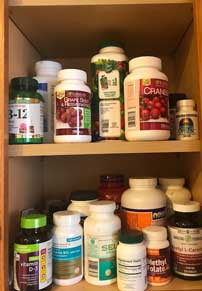 Sales of dietary supplements add over 100 billion dollars to the U.S. economy. More that two thirds of adults take some kind of supplement each year, much of it vitamins. People take others called “neutraceuticals” for a a variety of reasons. Some seek a pharmacological result similar to regular medicines or drugs. Others want insurance against vague notions of an inadequate diet. Often taken in large doses, the body has to deal with them either by metabolizing them in some way or excreting them. So-called biohackers and other people who take substances in large quantities should consider themselves to be a laboratory experiment.
Sales of dietary supplements add over 100 billion dollars to the U.S. economy. More that two thirds of adults take some kind of supplement each year, much of it vitamins. People take others called “neutraceuticals” for a a variety of reasons. Some seek a pharmacological result similar to regular medicines or drugs. Others want insurance against vague notions of an inadequate diet. Often taken in large doses, the body has to deal with them either by metabolizing them in some way or excreting them. So-called biohackers and other people who take substances in large quantities should consider themselves to be a laboratory experiment.
Will they make you healthier or live longer? The research is mixed and not very conclusive. What yields increased lifespans in worms, fruit flies, and rats, does not necessarily translate into human longevity or well-being. Unless you are willing to invest a lot of time to study the subjects involved in human nutrition, biochemistry, physiology, pharmacology, etc., you will have little rational idea about what you are doing.
Nevertheless there are some simple things that you can do but they require self discipline:
- Learn about human nutrition in order to make informed choices about the food you consume.
- Instead of eating large quantities of a single food, eat many smaller portions of a variety of foods.
- Fast food, convenience foods, and even junk food can he healthy if consumed in appropriate quantities, usually far less that the portions offered for sale. Split a portion with someone else.
- Drink water. Consider other beverages on the basis of nutritional value. Tea contains polyphenols, which may have health advantages, but also contains methylxanthines that act like pharmaceutical substances.
- Although it is often difficult to know the quality of food, buying food labeled as organic may reduce your exposure to toxins.
- Food additives, despite being approved by the FDA, have poorly understood biological effects. One study associates caffeine and artificial sweetener in young girls with early onset menarche (menstruation).
- Some things we eat may not be absorbed by us or have any direct metabolic effect. Sucralose is poorly absorbed by us and is regarded as safe; nevertheless it directly alters the gut microbiome, which has profound effects on inflammation and immunity.
- Teenagers are notoriously short on self discipline. So are adults when it comes to healthy sleep habits. The need for good sleep is so important that it makes sense to start with sleep when you are trying to have a happy life. The health will follow.

